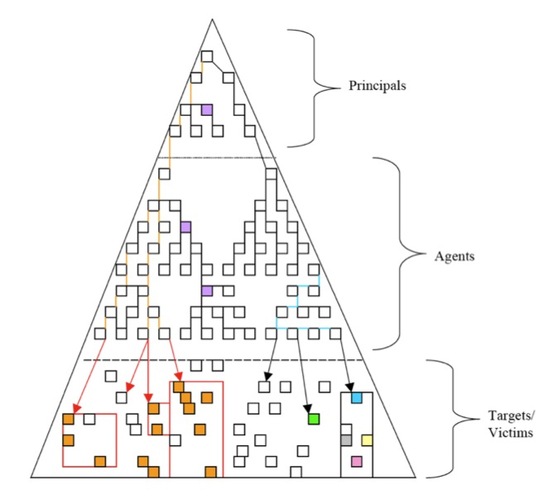
The original ideas about repression were largely structural-functionalist in orientation whereby some political-economic-culture system resulted in state-sponsored political violence. Over time, something more akin to the model to the left has emerged whereby a political authority (principal) develops some policy and then they subcontract out to some coercive agent (i.e., member of the security apparatus) to implement it (the arrows that lead to the targets/victims). While the idea of the repressive process is important, research has not exactly kept up.
Accepting that the model above is where the field has gone, Below I list the 5 things that a rigorous investigation of Atrocity Endings must include:
1) The "Kill" Order
•Plan/Preference:
•Party Manifestos
•Political Speeches
•Government Reports
•Memoirs
•Media Broadcasts
•Source: Political Communication, Cultural Studies
2) Order Diffusion
•Specific Information about Perpetrators
•Identity (name, unit, membership)
•How they receive orders
•How they are connected to political leadership
•How they implement orders
•Source: Security Studies, Criminology, Policing, Military Sociology
3) Victims/Targets
•Pre-violent status (i.e., size, location, resistance level)
•Source: Demography, Health, Public Opinion
4) Event/Campaign Engagement/Process
•Enactment of behavior of Interest (i.e., perpetrator-victim dyad by space/time)
•Range of activity, intensity at time t to t+n
•Sources: Micro-Foundational Research tradition (Ball, Davenport and Stam, Kalyvas, Strauss, Wilkinson)
5) Event/Campaign Termination
•Behavioral termination of campaign (i.e., killing stops)
•Sources: Micro-Foundational Research tradition (Ball, Davenport and Stam, Kalyvas, Strauss, Wilkinson)
 RSS Feed
RSS Feed
